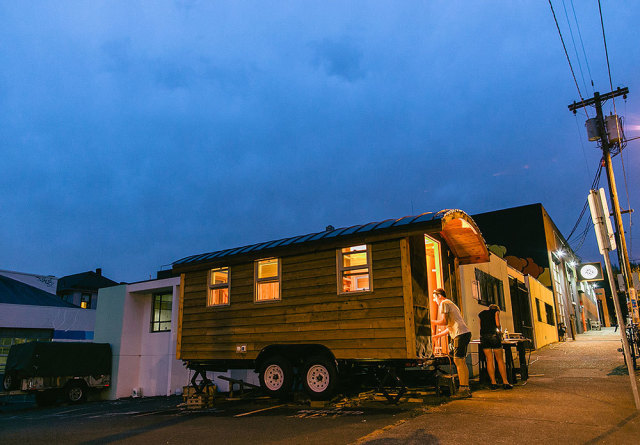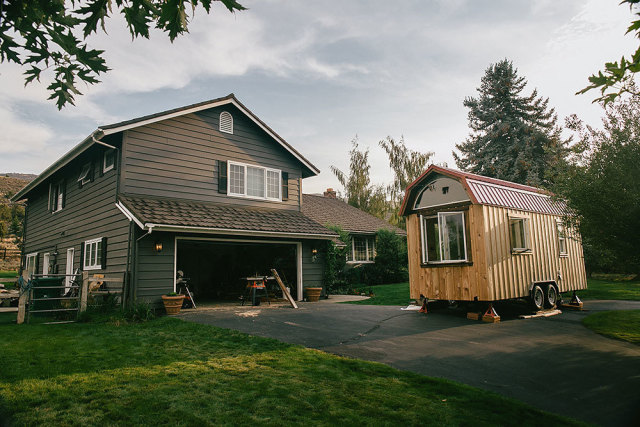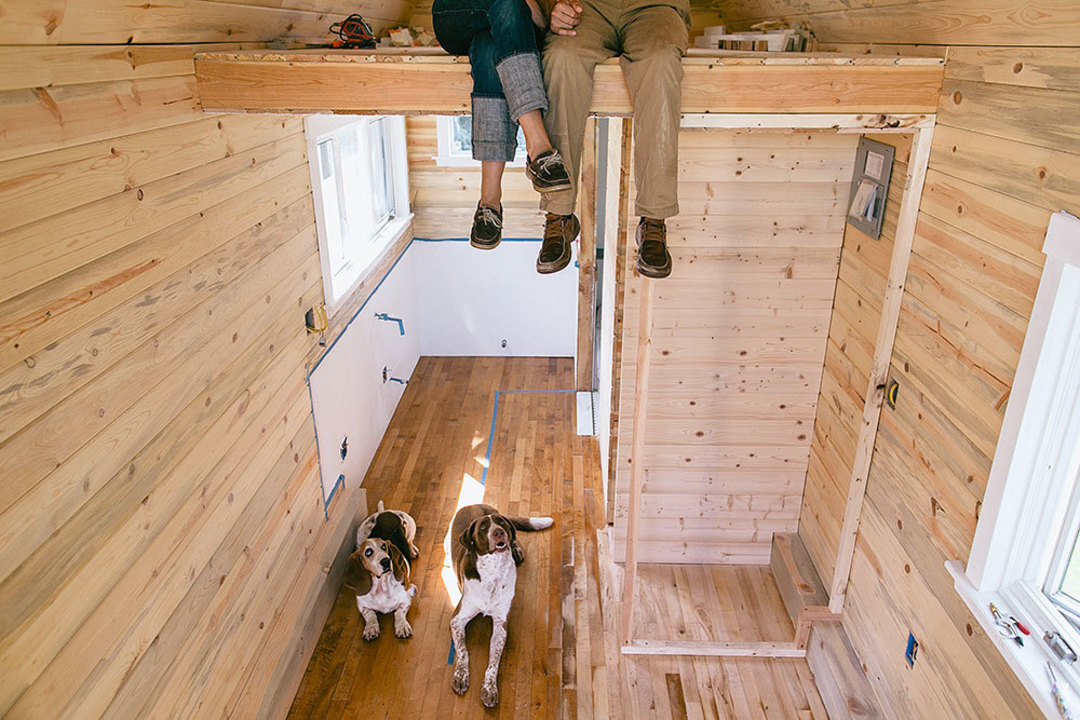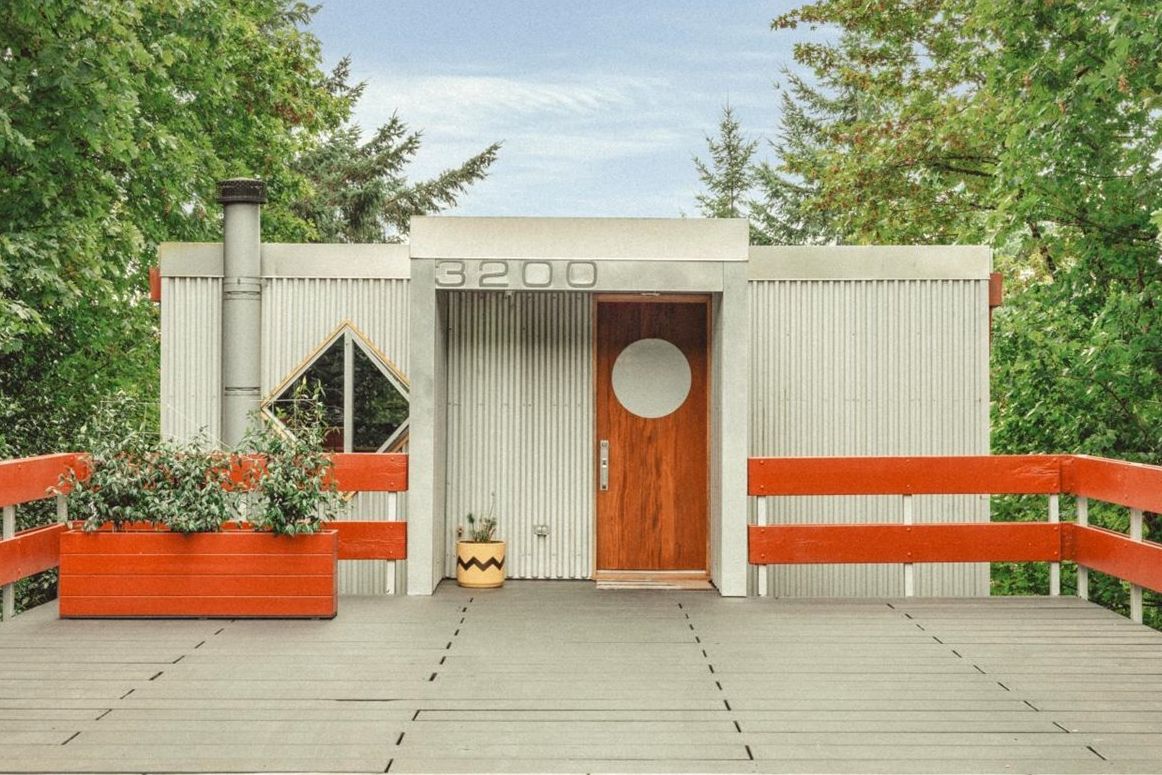Why Are Portlanders Obsessed With Tiny Houses?
Australian documentarian Jeremy Beasley's film Small is Beautiful traces the motivations and complexities behind four Portland "tiny house" building projects. What drives people to create these voguish mini-houses? What's great about them? And what's hard? We talked with Beasley before Small is Beautiful screens at the Laurelhurst Theater on May 7, 7 pm.
How did your a documentary on the global tiny house movement become a film about four Portland projects?
I started out extremely broad, because I was interested in a tiny house for myself, and I wanted to know if people were happier living that way. I was looking around all over the place, but when we came to Portland, within a week we’d interviewed about 50 people. I realized there’s an industry there, an educational base there, and something like a perfect storm of everything people need to build these projects.

I also wanted to focus on one place because I wanted to go deeper and follow some people over a longer period of time, so we’re not just showing the romanticized version of tiny-house living, which you see a lot on blogs and websites.
People do seem inordinately interested in tiny houses in Portland. Why?
Portland has a thing going where all kinds of niche movements are very strong there. There are communities around so many different affinities and interests, and I think you’ll find a well-built movement around just about any niche idea there. And on the east side, in particular, blocks and lots are huge, so it’s not very difficult to find a yard to put a tiny house in. I think when we started there were 20 or 30 projects around the city. Now I think there are over 100.
To back up a bit, why are you interested in tiny houses?
In Australia, a bit like here, housing prices have gotten quite crazy. I realized I’d never be able to afford—nor did I want—a 30-year mortgage to secure my housing future. So I was looking for ideas on alternatives, and a tiny house—that’s an idea you can fathom as an ordinary person. I could never build a 2,600-square-foot house. But when you’re talking about 200 or 300 square feet or even less, it becomes much more approachable.
Freedom, in every sense of the word, seems to be what attracts people to the idea.
What did you learn about the realities of tiny houses from this in-depth approach?
I have a friend designing a tiny house for me now, as a matter of fact, and I did learn a lot. I learned that I wouldn’t build it myself. One cool thing about the movement is definitely the empowerment people come by through building these projects themselves, but that’s an incredibly demanding and consuming task. I’d also—this might seem funny—make it smaller than some people choose to. I’d go without a loft and just make it a bedroom on wheels, essentially.

What motivates people to get into this movement?
It’s a political statement, it’s going against the grain. It will always remain a niche thing, because not a lot people can imagine living in that kind of space. But freedom, in every sense of the word, seems to be what attracts people to the idea. Freedom to define their own model of housing, freedom of movement, freedom from mortgage and debt. There are huge political, religious, and social differences between people drawn to tiny houses, but that seems to be the common ground.
But—not to say there’s a “dark side” to tiny houses—your film also delves into the challenges they involve, correct?
Definitely. I think there’s a lot of frustration within the tiny house community at the degree to which the Internet romanticizes the whole experience. You only see these beautiful, cute, serene images. What our film gets into is that it’s not a utopian solution to everything in your life. Your life continues, with all its problems. And it’s not easy! One of the projects we filmed still isn’t finished yet—we’ve had a bunch of people say, well, we’d have loved to see the inside of their finished house. And I say, so would I, but it’s not done yet.
What’s the reaction to the film been so far?
It’s a bit divisive, which I think is actually a positive sign. Some people have said they wished it was more of a how-to. Others say, well, I could never do that. But others are actually inspired by seeing the struggles we documented—I think they make it seem real in a way that some of the more sanitized images don’t. I went to a house the other day, and it was just as you live: the bed wasn’t made, it wasn’t tidied up. And then I saw a photo tour of it online and it was immaculate! That’s the difference we were exploring.





